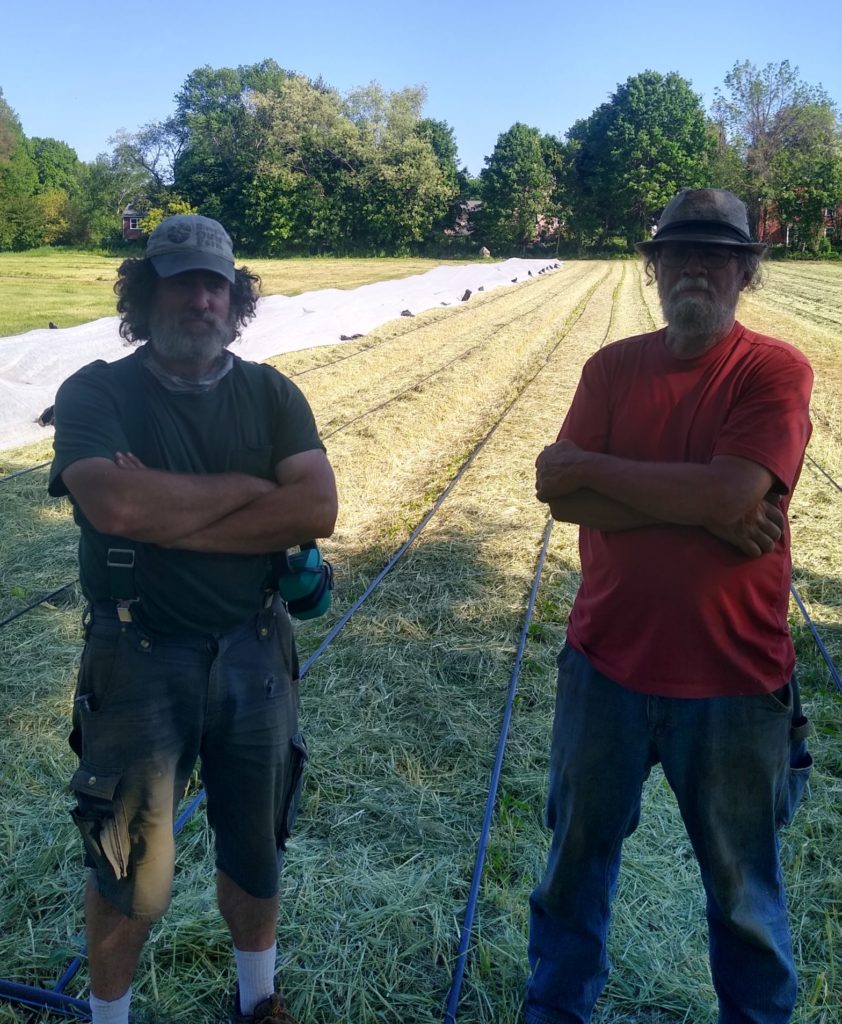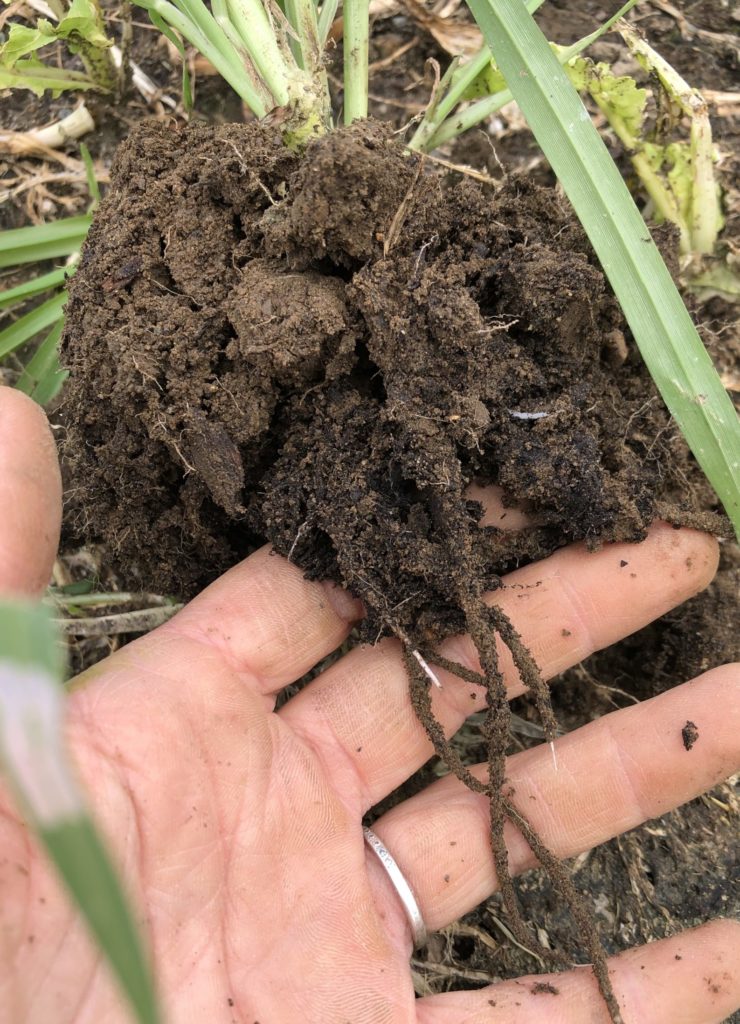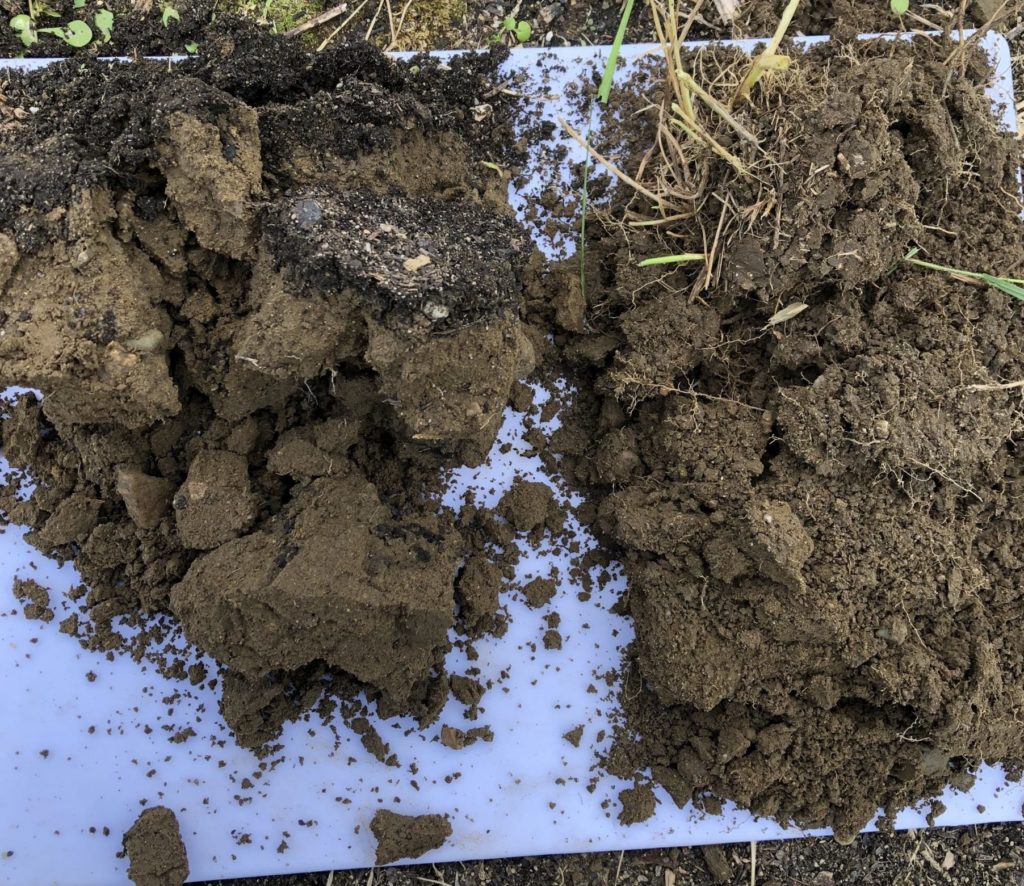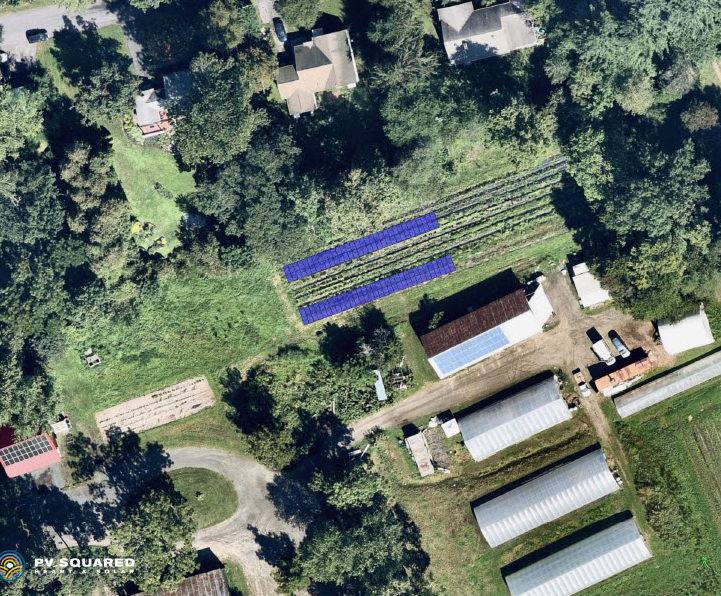How do we, as farmers, adapt to the ongoing climate disruptions in a way that keeps our community well-fed and our soil in place in the face of alternating cycles of droughty and super-soaked weather? This week, I have been spent several hours in Zoom meetings, meeting with a group of farmers and service providers who, like me, are enrolled in the Climate Adaptation Fellowship. This was the capstone of a year in which I, and Caro Rozell (former Simple Gifts Assistant Farmer, current American Farmland Trust soil health rockstar, and my partner service provider for the Fellowship,) put some effort into working on strategies for dealing with the climate disruptions to come. Here are some of the things we have explored and our next steps.
No-till farming systems

We have put a lot of effort into developing our no-till cropping systems and transitioning into no-till production over the past 2 years. Reducing or eliminating tillage can help us to adapt to climate disruption in many ways. A healthy, high-organic matter soil acts as a sponge to absorb water when it is wet, and release it when it is dry, helping us to keep production up in both dry and wet conditions. Tillage is like opening the damper on the slow-burn woodstove of our soil, bringing air into the system that allows the organic matter to oxidize and burn off. Reducing tillage also keeps the soil structure intact, and often with a heavy mulch on top, which helps keep it from running off in increasingly frequent extreme precipitation events. But organic farming systems typically rely on cultivation, or light tillage, to control weeds, so we have really had to redesign our systems from the ground up to reduce tillage. In 2021, we had nearly 60% of our cropped land, and 80% of our total tillable acres, in no-till production, and we reduced tillage on all of our cropland. We were helped in this effort by a grant from the Mass. Dept. of Agriculture’s Climate-Smart Farming program that partially funded some new equipment.

Take a look at those rhizosheaths!
Caro came out and took samples to start to document our improvements in soil health. She has had a lot of feedback from other organic farmers who have transitioned to no-till who have told her that it took 4 years for their soil health to improve after transitioning to no-till, and we want to document that process on our farm

Next Steps for No-till
We have applied for a grant for next year that would help us dial in our mulched no-till cropping system by measuring the amount of mulch that we are adding, documenting the weed control that we achieve in that system, and measuring the nitrogen availability in the soil. We found that nitrogen availability was a key limiting factor in the mulch system, but we don’t want to add too much nitrogen, because nitrous oxide can be released, especially in wet, high-nitrogen conditions, and it is a greenhouse gas that is 265 times as potent as carbon dioxide. Another grant proposal would fund improvements to our spiky transplanter, adding coulters to the front that would cut a slit in the soil and make a more looser spot for the transplants to go in. And we have funding for Interlace Commons to help us identify and plant some woody perennials crops in the field. This alley cropping strategy will mean more carbon sequestration, more fungal soil to innoculate our neighboring crop strips, more habitat for pollinators and other beneficial insects, and in a few years, more delicious fruits and beautiful flowers for you all!
Energy usage on the farm
Another thing we did this year was conduct an energy assessment on the farm. While we have focused a lot of our time on converting our greenhouse heating to a renewable woodchip-powered boiler, and wanted some help in optimizing our system, the audit found that a staggering 72% of our energy use is electric, and that 52% of our energy usage is for refrigeration. The audit gave us some suggestions for reducing our energy use to reduce our carbon footprint by up to 10 tons of carbon per year. These suggestions are mostly fundable through USDA’s Natural Resources Conservation Service, and we have applied for that funding. We also used that audit to take a preliminary look at what it would take to get our electric use on an all-solar basis. The picture below shows one option for building out that solar power, and we will be looking at funding that effort (the quote for the pictured system was well over $200,000,) as well as the optimal location, over the next year or two. Converting all of our electricity to solar would save us closer to 70 tons of carbon emissions per year, but it would be a big project for us financially! We’ll keep you posted on all of this.



Glad to read how you’re working on this. It takes a lot of figuring and experimenting.